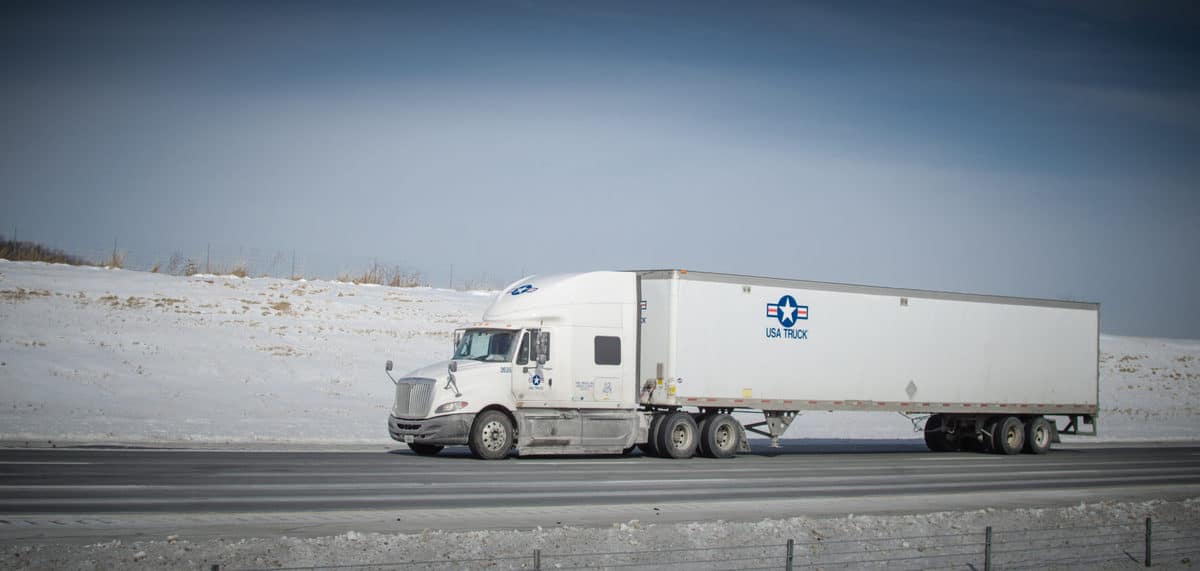There’s no rest for the weary as another winter storm may slow down Midwest freight movement just a bit in the coming days. The good news is this storm won’t be as harsh as the one last weekend. Also, snowstorms are coming back to the Pacific Northwest this week after a short break the past few days. The first burst of snowfall in the region is happening today.
Preamble
A slow-moving system will produce snowfall today in the mountains of eastern Utah and western Colorado, as well as western and northern New Mexico. In most areas, accumulations will be light. The highest amounts of 6 to 12 inches will hit the mountains of northeastern Arizona and northern New Mexico. This will result in moderate impacts on I-40 in New Mexico, from Grants to Gallup.
Main Event
Tomorrow, the Southwest system will produce snow and freezing rain in eastern Oklahoma, western Arkansas, eastern Kansas, eastern Nebraska, northern Missouri and Iowa. Then it will spread into northern Illinois and Wisconsin tomorrow night, continuing across the Midwest on Thursday, possibly lingering into Friday.
Fortunately, this is not forecast to be the kind of situation that would cause interstates to shut down for long periods of time. This is good news! The latest FreightWaves SONAR data, updated this morning, shows increasing capacity in several Midwest freight markets. Carriers have been sending trucks back to these areas after last weekend’s storm. This is indicated on the map above by the dark red areas in Minnesota and Wisconsin, representing decreases in outbound tender rejections in the past week (OTRIW). This means carriers have been accepting more loads from these markets since the storm cleared.
Light snow is expected over this extended period of time. Heavy snow bursts are unlikely, and winds will not be as strong as the winter storm that hit many of these areas last weekend. Temperatures across much of the storm’s track will hover around freezing, meaning snow in most areas will be a bit wet rather than dry and fluffy.
Snow accumulations of 2 to 5 inches will be common, with isolated locations of 6 to 8 inches. Ice buildup should be one-tenth of an inch or less. Since temperatures will be near freezing, some of the snow will not accumulate on major highways. This will limit the impact, especially in the more southern and eastern locations of the storm’s impact zone. Drivers can expect some minor/moderate delays on the roads. Shippers should anticipate low-end disruptions regarding air cargo, rail cargo and regional supply chains.
Northwest
Except for the past few days, the mountains in the Pacific Northwest have been slammed with periods of nasty snowstorms since the beginning of the year, resulting in occasional road closures. Another storm is cranking today. High elevations of the Washington and Oregon Cascades could see 12 to 24 inches of snowfall through tonight, with more coming on and off throughout the week. This is on top of the 90-plus inches of snowpack still on the ground in some places.
Up to 6 inches of snowfall could cause delays today on the I-5 corridor in northern California, from Weed to Mount Shasta. Fortunately, this is only a 10-mile stretch. Some fairly quick snowfall may also cause minor issues from Reno-Lake Tahoe into the Sierra Nevada of eastern California.
Blowing snow will reduce visibility at times, but winds will not likely reach blizzard strength. Snoqualmie Pass (I-90) and Stevens Pass (US-2) could become trouble spots again. These areas were closed periodically during the storms earlier this year.
These won’t be showstopping storms, but they will maintain the nuisance factor for drivers. Brokers, shippers and carriers should expect fairly short-term, periodic delays of some loads.
Additional notes:
Freezing cold weather will spread into parts of the Deep South, from southern Georgia to central Florida, overnight into early tomorrow.
Lows will drop like a rock tonight, ranging from the mid-20s to around 30 degrees. This includes places from Waycross and Brunswick, Georgia, to Jacksonville and Orlando, Florida.
Reefer freight – freight in temperature-controlled trailers – should be safe from damage if drivers who park in these areas keep their trailer fans running. However, to make sure dry van freight survives, drivers may want to keep their tractors idling. This will cause the trailers to vibrate, which, in turn, can help keep the freight from getting too cold. Other options include covering the freight with thick blankets or pulling the trailer into a garage.
Have a great day, and be careful out there!










